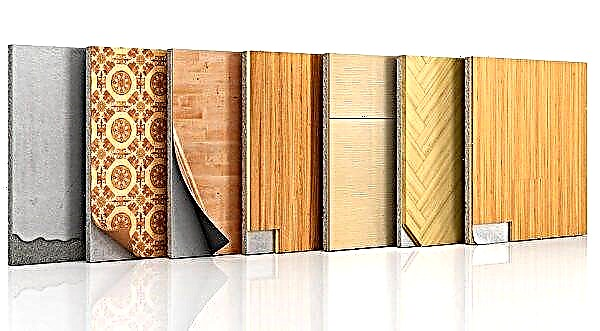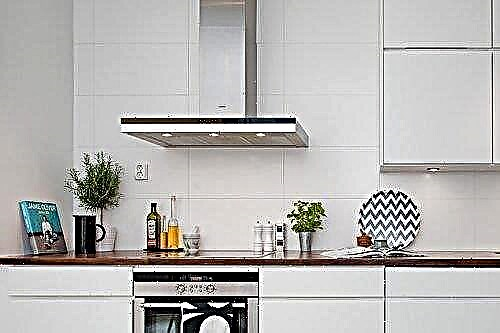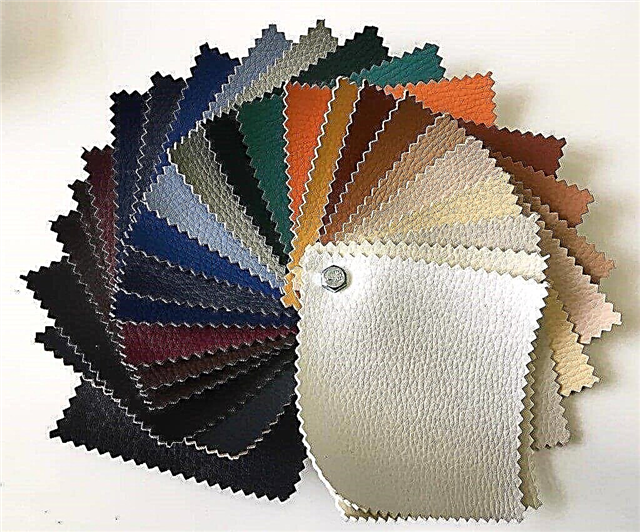In some apartments, residents are given a small but pleasant bonus in the form of a storage room. And people are happy with such a gift of fate, or rather the builder, and actively use these 2-3 square meters.
Different things are needed in the pantry. Some objects are destined to be forgotten, but something will wait for its day, and sooner or later it will be used. But in the heap of rubbish, finding the right thing will be quite problematic. To avoid such incidents, it would be nice to systematize storage of things.
If you have a fairly spacious pantry, then you can purchase custom-made furniture, the same cabinet. The craftsmen with their skillful hands will transform the pantry into a good place to store things. But not everyone can boast spacious pantries. For most people this article will be useful. Today we will figure out how to make comfortable shelves in the pantry.
What is needed for this?
First you need a desire, and also, preferably, have straight arms that worked with a locksmith tool. If there are none, then it is better to contact the masters. They can offer you more serious options. For example, built-in furniture may be made for you.
If there is a mood to plumb a closet with your own hands, then we will continue the preparatory stage. From the equipment we need a jigsaw, electric drill, hammer drill. For marking, you will need to get a tape measure, level, pencils and a construction corner from the bins.
From the materials we need wide floorboards, metal corners, as well as cardboard. With the help of the latter, we will figure out how to make shelves in a closet.
How are shelves made?
To get started, take cardboard, scissors and start cutting. Cut the sheets about 35 centimeters wide, 70 centimeters long. Attach the resulting sample to the side wall of the pantry where the shelf is planned to be installed. Cut it until it fits perfectly. Do the same with two samples with different walls. Oh yes, we will do U-shaped shelves.
When 3 samples are sized, you can start cutting boards according to their example. Bars are fixed on top of the corners, the structure is attached to the wall, and our future shelf goes upstairs.
Before installing the board, it can be varnished if you wish. But generally it is desirable to process the surface. Wood will absorb moisture, which is not the best way to affect its condition.
Then we repeat the same procedures with other rows of shelves. As a result, from ordinary bare walls we get something like a closet.
If you do not want to bother, then you can be bought custom-made furniture . Professionals will do everything for you: they will select the appropriate option, bring, install. You just have to use the thing with maximum convenience.
Design
The options for creating a rack in the pantry are few, there are only two: make a separate cabinet or attach shelves directly to the wall. After choosing one of the above two options, you should first make measurements of the premises and reproduce the detailed design of the future pantry on paper. It is necessary to take into account some nuances in order to use the shelves was convenient. For example, it is important to arrange the shelves in such a way that it is convenient for you to be inside, taking the right thing.

Be sure to consider the correct arrangement of shelves: from wide to narrow. Naturally, the wide ones should be at the bottom in order to store the heaviest and largest objects there, which are hard to fold up and remove from there. You also need to consider the distance between the shelves themselves. Preliminarily review the things that you put there and identify places to arrange everything at the right distance.
Next, it is necessary to determine the location of the racks, as a rule, either a U-shaped or a L-shaped form of the structure is built. These options are the most practical and convenient. For fixing, the metal brackets will be optimal, they are the most durable and can withstand the maximum load.


Materials
After all of the above actions are completed, you need to proceed to the selection of materials. There is one economical option, thanks to which you can save a good amount. If you have an old chest of drawers, bedside tables or a small bookcase at home, you can disassemble them and make good and free shelves from the parts.
The second option involves the purchase of boards made of wood or other materialhaving previously determined their width, thickness and quantity. Indeed, depending on the severity of the stored items, the shelves should be wider or narrower.

Some use ready-made plywood sheets, but this option is applicable only if you are not going to put heavy objects on this shelf. In the best case, under heavy load it can crack and gradually bend, in the worst it will break sharply and entail everything that it holds down. Therefore, for the pantry, it is still recommended to use denser materials to be sure of their strength and quality.
In principle, the material can be not only wooden, metal structures can be used if they are strong enough to withstand the expected load. You should also think about the fastenings that will hold the board, and other consumables.
Tools
Consider the necessary tools for work. In principle, if you already have ready-made and suitable-sized boards, you will not need too many of them. If the material is not ready and you need to adjust it in size and shape, then you will need a jigsaw and a planer to complete the necessary actions. Be sure in this case, the presence of sandpaper for processing the edges of the saw and the entire shelf as a whole, to give it a complete look.

When the shelves are ready, only a punch is needed from the toolsto make holes in the walls and fix the brackets, as well as a screwdriver if it is necessary to combine parts with each other. It is mandatory to use the roulette during operation for measurement accuracy, construction level, so that the shelves are even and a simple pencil or chalk for wall markings.


Seat selection
The first step in starting work is choosing a place for the shelves. You cannot attach them to the wall just like you wish, it is very important to take into account certain factors so that upon completion of work you will be happy with the result, and your pantry will serve you for many years. The wall intended for fastening must necessarily be load-bearing, since ordinary partitions can not withstand high loads, and all shelves simply fly down.
The mounting location must be prepared in advance: it should be sanded, leveled and, if necessary and desired, plastered. This is necessary so that the shelves get up evenly and there are no problems with their installation.
And of course, it is important to think about the proper lighting of the storeroom for your convenience. This must be done before installing the racks.
Installation process
After carrying out all measurements, preparing the necessary materials and tools, as well as performing all of the above actions for choosing a place and preparing it, you can get to work.
The first steps to realize your little dream in the form of a pantry room in life:
- First of all, you should mark the walls with a tape measure and the building level. This will help you ease the task during fastening and ensure the evenness of the shelves.
- Next, you need to make holes in the wall with a puncher, and then fix the base for the brackets with dowel nails in these places. The distance between them depends on the height of future shelves.
- After performing these steps, the frame of the future pantry is assembled and brackets are installed.


- The next stage applies only to those who do not have ready-made boards and they need to be cut independently. After checking the correct size (just in case), you need to cut the shelves you need in shape with a saw or a jigsaw, and then carefully process their edges with sandpaper to give the surface an attractive appearance.
- When the main work is done, it remains only to put the shelves in their places and fix them with a screwdriver and fasteners.
- The last step will be cleaning and cleaning the room from excess sawdust, unnecessary parts and other things that you needed in your work.
Your storage room for organizing and storing items that are unnecessary in everyday life is ready. You can bring things in and enjoy the vacant space in the apartment.


How to make a rack in the pantry, you can see in the next video.
Layout
Space calculation is an important point that helps to draw up a rational layout of shelving or shelves for further comfortable use. The compact mezzanine allows even a small room to be used with maximum practicality, and then it will be possible to store a large number of necessary and temporarily unnecessary things in it.

In some modern housing plans, a pantry is not provided at all, but savvy owners manage to solve this problem in the most extraordinary ways. For example, they place racks in a niche, a closet, or a dead end of a corridor, making drywall partitions and equipping the original storage with doors. And for those who already have this room, there remains only a competent organization, taking into account the purpose of the shelves being constructed.
Of great importance is the purpose of the installed structures. For books and collectibles, hinged structures are more suitable. Boxes are placed down or on shelves of considerable depth.
There are several layout options:
- you can put mezzanines at the ends of the room,
- wide shelves fit with the location of the letter "G",
- if the area allows, the placement of the shelves with the letter “P” remains ideal - then in the middle there remains a convenient passage.
For preservation, wide and durable shelves of wood or metal are needed, stable, and ready for heavy loads. If storage of valuable products is provided, it is recommended to make shelves with glazing. It reliably protects objects from dust and pollution. The wooden rack is pre-coated with stain, paint or varnish - so it will be protected from decay, mold and other negative influences.
Types of storage facilities
To choose the right type of design, you need to consider common options:
- traditional monolithic shelves without any additions and perforations - they are suitable for storing small household appliances, other items with an average weight,
- for heavy things make devices with stiffening ribs,
- fragile, round and small objects provide shelves with sides,
- Hole models are required for natural ventilation, and are used to store seasonal clothing.
It is important to choose the right material:
- natural wood safe, environmentally friendly, but subject to moisture and pollution, therefore, requires additional processing,
- from metal stable and durable constructions suitable for high loads are obtained, but their main drawback is the tendency to corrosion, so it is better to choose galvanized steel products,
- polymer shelving - A good alternative to metal and wood, plastic is resistant to many external influences, but over time it may lose its original appearance and turn yellow.
Based on the expected load, you should think in advance about the thickness of the boards. The standard size for average weight is 3 cm, although for light things you can build a plywood structure.
Different types of material require different fasteners, but, in any case, metal ones are the most durable and reliable. For long shelves, a sufficient number of fasteners should be used.


Preparatory stage
Due to the fact that metal shelves are more suitable for greenhouses and garages, the use of wood will be more aesthetic in a residential building.
From the tools you will need:
- drill (perforator),
- hand saw for wood,
- hammer,
- screws, dowels and screws,
- Phillips and straight screwdrivers
- ruler or tape measure


- building level,
- drill bits for concrete surfaces,
- connecting flanges
- abrasive paper
- varnish, paint, stain of a certain color.


Metal pipes, brackets and wood for shelves should also be prepared. Boards should be 25-30 mm thick, cut to length, sanded with a grinder or sandpaper. Bars with a cross section of 20X30 mm are cut along the depth of the shelf.


Before installation work, the room should be cleaned of things, dust, dirt, in a word, a thorough cleaning should be carried out.
It is necessary to repair the pantry, perhaps to re-stick the wallpaper or re-tiling the walls with tiles. It is advisable to treat the room with preparations from fungus, mold and other microbes in advance. For such a small room, it makes sense to use light coatings.
If there is such an opportunity, you can install a ceiling fan for ventilation, or make lattice or sliding doors to the utility room. It is better to illuminate such a room with fluorescent lamps.


Rack assembly
First, using the level, markup the location of the shelves on the walls. The reliability and stability of the entire structure depends on their accuracy.
Work should be done in a certain order:
- Prepared bars are attached to the ends, the back and sides of the room. Depending on the load, you need 2-3 screws.
- The boards are laid over the boards and fixed with long self-tapping screws (40 mm).
- To strengthen the structure, metal pipes will be needed. They do not allow the elements of the rack to move and bend. Size is determined by height from the floor to the first shelf.
- The pipe is cut, placed between the floor and the shelf, then fastened with flanges, pipes are installed between the shelves. It is important that the metal supports stand strictly upright, which ensures optimal stability.


To create a hinged shelf, you will need the same tools and boards, 25 cm wide and about 2 cm thick. As a wood for mezzanines in the pantry, it is better to choose a pine or larch:
- To work, you need two boards with a length of 80 cm, and two with a length of 25 cm. They are grinded with a grinder until complete alignment and smoothness.
- Four boards are connected into a box, they make perforations for self-tapping screws, furniture hooks are fixed on the back side with screws.
- After that, the wood is stained with wood stain, painted and covered with a layer of varnish. All layers must be completely dry before use.

When making and placing racks, it is recommended to leave a sufficiently large distance between the floor and the first structural element, since bags, large boxes and other large items can be stored in the lower part of the utility room.


Racks in the pantry help to save free space of the living space, hide unnecessary things, and, thanks to practical placement, make it possible to quickly find the necessary items.In addition, do-it-yourself constructions allow you not to spend the family budget on the services of professional builders.



